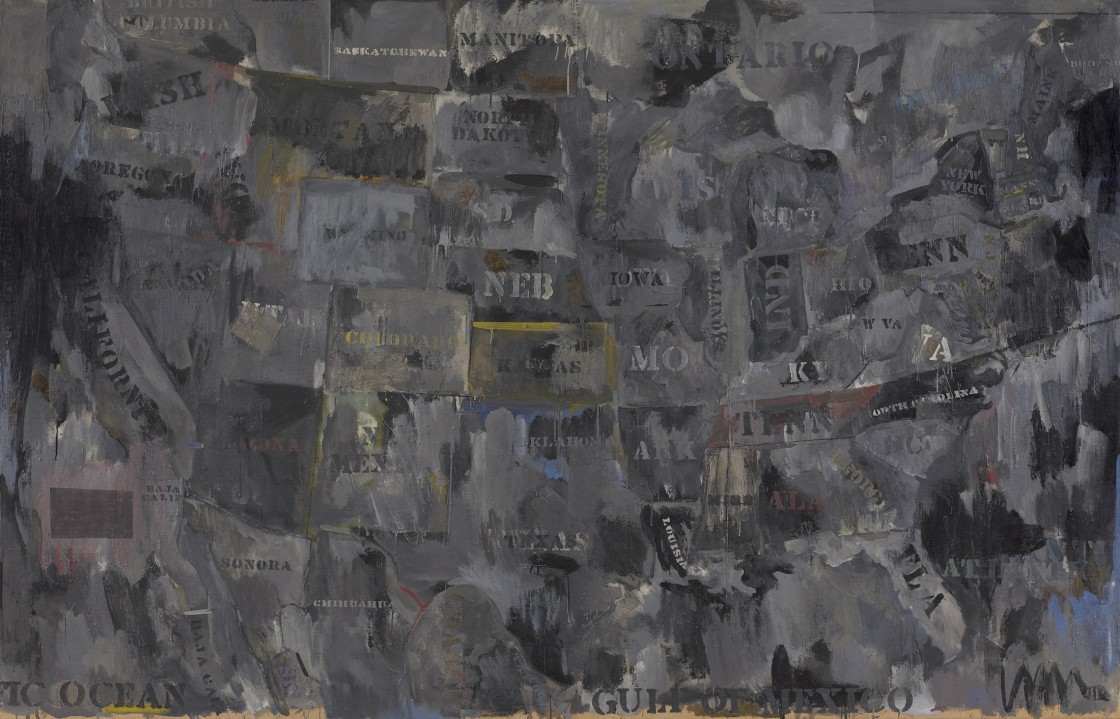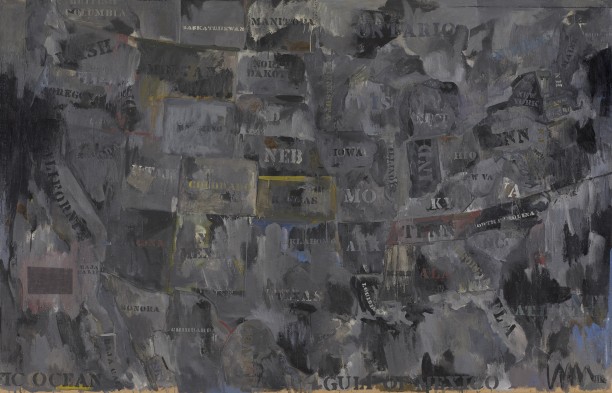Map
1962

-
Medium
Encaustic and collage on canvas
-
Dimensions
Frame: 61 x 94 1/4 x 1 3/4 in. (154.94 x 239.4 x 4.45 cm)
Image: 60 x 93 1/8 in. (152.4 x 236.54 cm) -
Credit
The Museum of Contemporary Art, Los Angeles
Gift of Marcia Simon Weisman -
Accession number
90.17
-
Object label
Jasper Johns’s predominantly gray painting could be classified as an actual map, insofar as it is functionally useful in locating, say, Louisiana or Oregon in relation to one another. But Map is also a painting, the two-dimensionality of the canvas surface corresponding exactly with the flatness of the map it pictures. The question it poses is: how is such a painting to be differentiated from the thing it represents? Map both diagrams the American states and obscures them beneath a sensuous, sometimes splotchy, sometimes dripping application of paint and collaged elements. So, what distinguishes abstraction from representation? Since Johns mimics the abstract expressionist emphasis on brushstroke as the carrier of an artist’s unique individuality, yet relies on an impersonal, preformed subject matter, how can one tell the difference between authentic expression and superficial style? Attempting to puzzle out Map’s philosophical questions reveals the limits of binary categories like thing and painting, or reality and representation.
